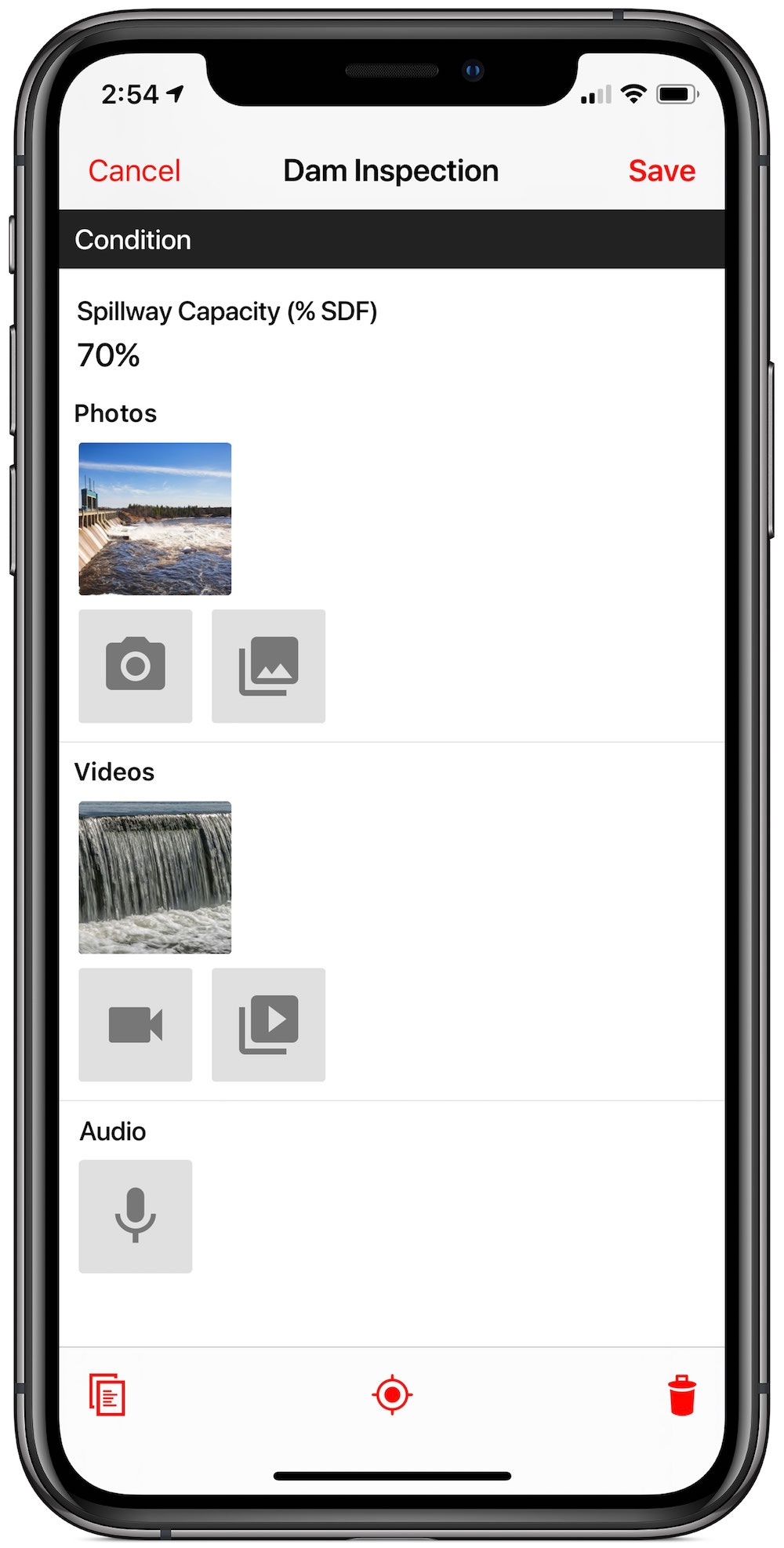
Mobile technology can help dam owners and operators save precious time and resources while keeping their dams safe and operational. Sam Puckett, content marketing specialist for Spatial Networks, gives more details about the Fulcrum mobile dam inspection app.
The average age of the more than 90,000 dams in the US National Inventory of Dams is 57 years, and 17% of those dams have high hazard potential — meaning failure would likely result in the loss of human life.
Climate change, natural disasters, and the rapid pace of development present challenges for the owners and operators of these aging dams. Between 2000 and 2019, states reported 294 dam failures and 537 non-failure safety incidents.
These incidents are not only dangerous, but costly: The Oroville Dam crisis in 2017 led to the evacuation of nearly 200,000 California residents and cost an estimated US$1.1 billion in emergency response and repairs.
Regular inspections of dams can help prevent incidents
Regular inspections performed by knowledgeable professionals are key to preventing similar disasters and ensuring safe, continuous dam operations.
Dam inspections have traditionally been conducted with a clipboard, camera, flashlight, tape measure, pencil, and a notebook or paper checklist. Once an inspector completes the evaluation, a formal report is filed with the dam owner so they can maintain a historical record.
This cumbersome process creates several problems for both the inspector and dam owner: Paper inspection reports are easily smudged, damaged, or lost, and can be illegible or incomplete — which creates the need for re-inspections, or worse, can leave critical findings unreported.
Paper-based inspections also cause delays as dam owners and operators wait for the inspector’s report to be returned to the office and their results entered into a database. This process can add days or weeks to your timelines, when swift action may be what is required to maintain the integrity of the dam.
The use of mobile technology
Today, mobile technology exists that can transform dam inspection workflows, eliminating many of the issues created by paper processes.
Mobile dam inspection apps reduce delays caused by illegible handwriting or omissions and result in more complete, consistent reports that can be shared with stakeholders within hours — or even minutes — of an inspection being completed.
One such application is Fulcrum, a low-code/no-code cloud-based platform that allows organisations to rapidly develop and deploy apps that automate inspection workflows. The platform consists of iOS and Android mobile apps for data collection and web-based form building, user management, and quality-control tools.
Development of the Fulcrum app
Built by a team of geographic information system (GIS) analysts, developers, and map designers, Fulcrum was launched in 2011 as a smartphone-based filed survey tool for building digital forms, deploying to consumer-grade smart devices, collecting data (even fully offline), and syncing back to a central cloud-hosted service.
This platform has been adopted by municipal governments around the world, as well as users in the water and sewer, utilities, and environmental engineering industries for inspections, asset inventory, workforce management, and more. Fulcrum users report time-savings of up to 66% over using paper forms.
How does the Fulcrum app work?
Fulcrum enables you to build highly customised inspection forms for evaluating embankments, spillways, downstream hazards and more in minutes, directly from your web browser.
The drag-and-drop app designer lets you visually select from dozens of common form components, including text, numeric, timestamps, choice lists, photos, video, barcodes, signatures and more — no coding required.
You can also download the pre-made dam inspection app or any of the templates in the gallery and customise it to suit your needs.
Any field in Fulcrum can be pre-populated to save time during inspections, or marked as required so no report can be submitted before it is complete. Managers can make rapid changes to any forms and deploy them to inspectors in the field as issues arise.
Storing data on the app
Since Fulcrum works offline, inspectors can safely collect survey data in disconnected environments.
All data is stored locally on the device and can be synced to the Fulcrum server once the inspector reaches network connectivity.
Syncing sends any new records collected into the central database and updates existing records or forms on the mobile devices being used out in the field.

Everything collected with Fulcrum can be automatically geotagged with GPS coordinates, which makes it easier for repair teams to locate the site of the damage.
When an inspection is complete, users can export the data to their preferred database, spreadsheet, or GIS application for real-time or near real-time reporting and analysis. The platform supports a variety of standard formats, such as CSV, Excel XLSX, and ESRI Shapefile.
Fulcrum also offers advanced developer tools and APIs for programmatically accessing and updating your records.
Fulcrum app can help identify problems
Most problems that lead to dam failure or safety incidents do not occur overnight, but take months or even years to develop and become visible. That’s why it’s crucial to compare the results of each inspection with those that were completed previously to note subtle (or not-so-subtle) changes over time.
Fulcrum streamlines this process by making prior inspection reports accessible to the user directly from their mobile device in the field.
By viewing photos and documentation from the last inspection and comparing them with current dam conditions, the inspector can quickly identify trouble spots and alert stakeholders to potential hazards before they become emergencies.


